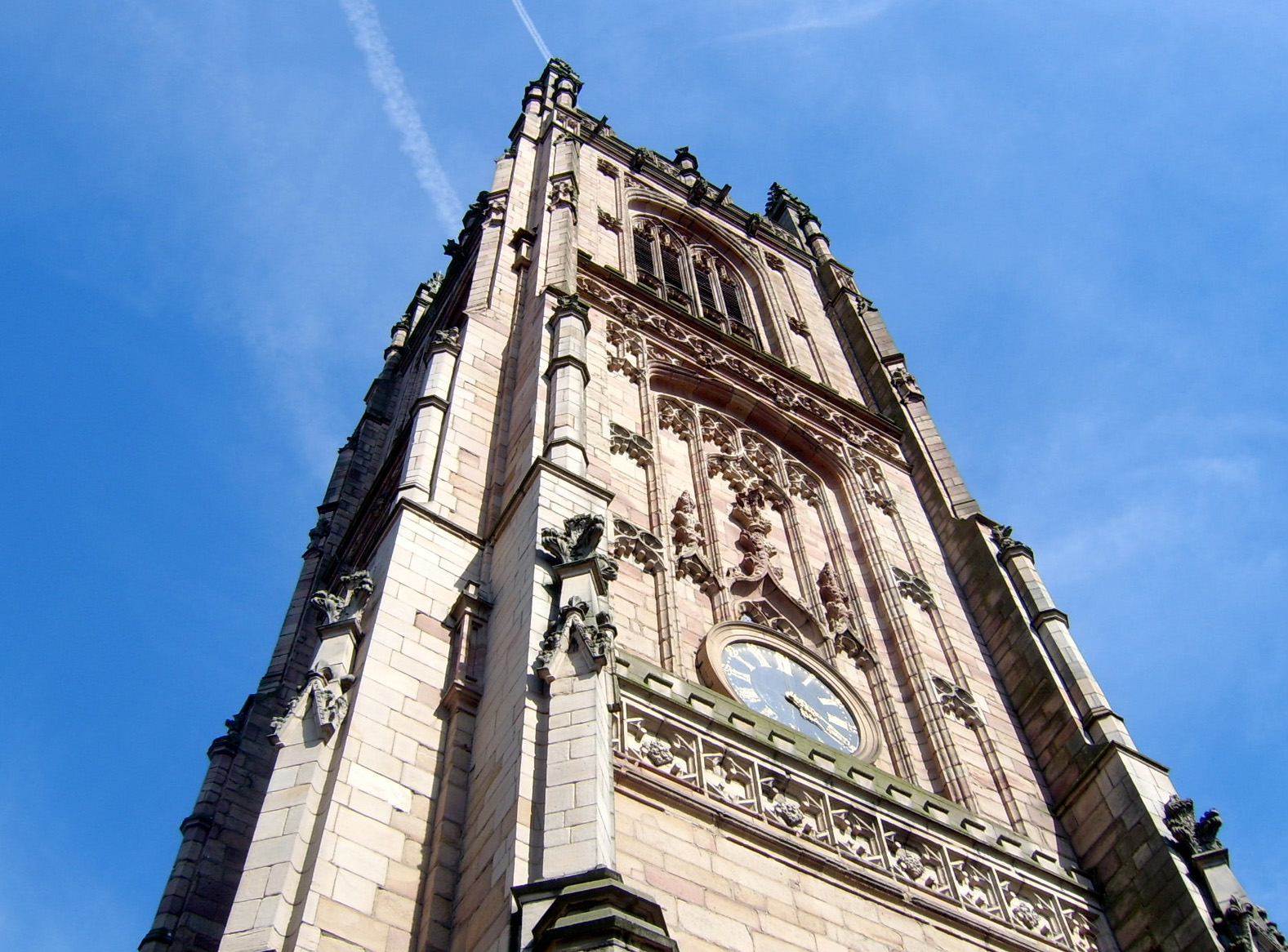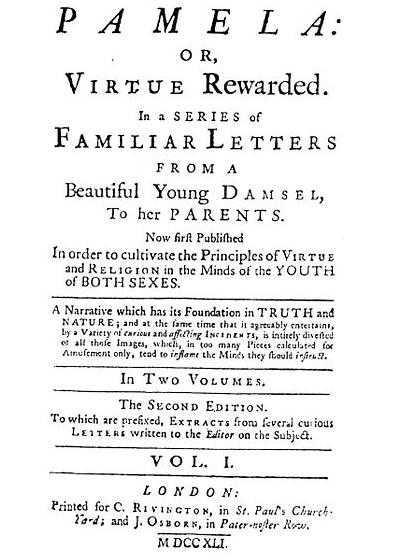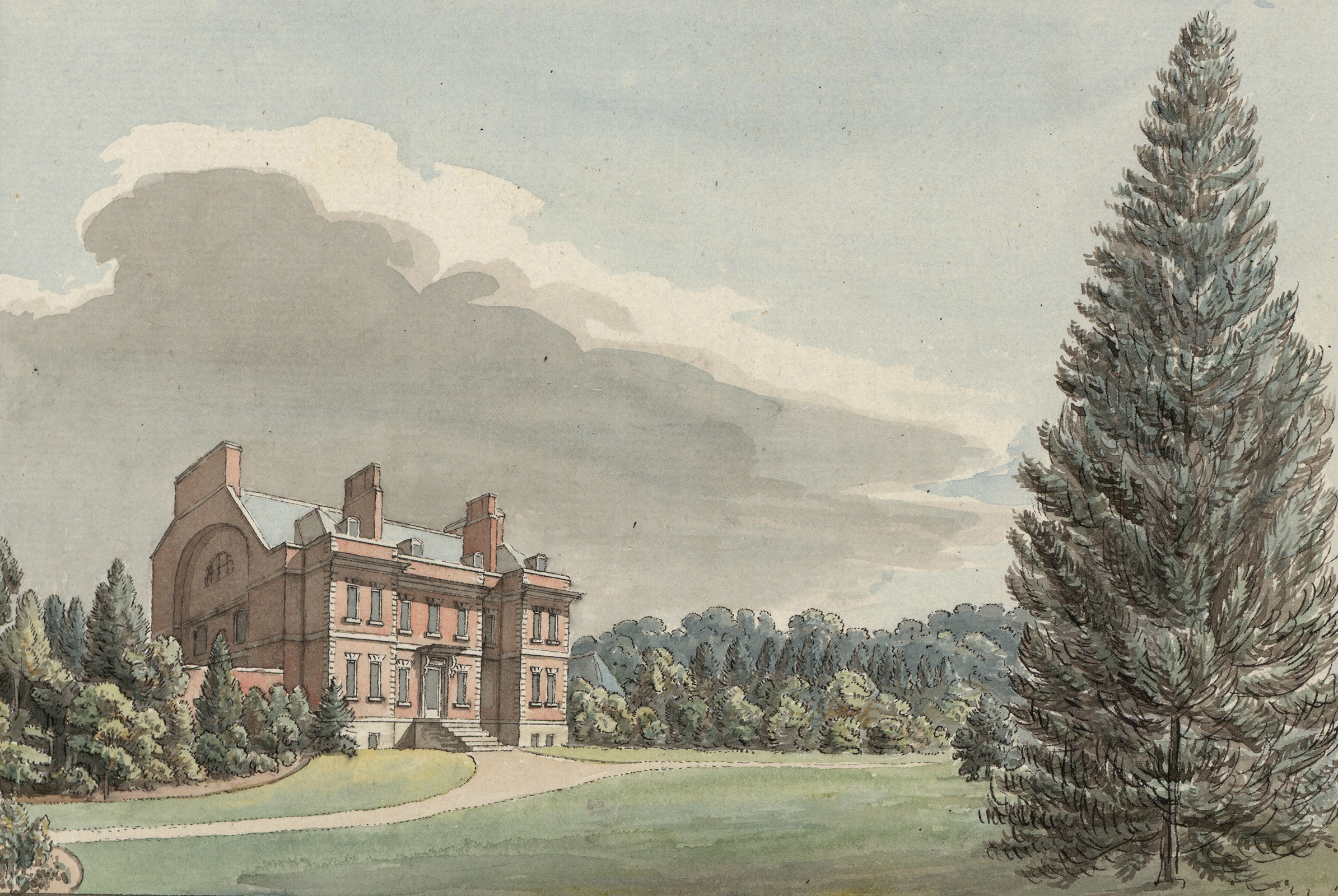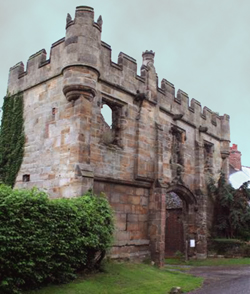|
Mackworth, Amber Valley
Mackworth is a village and civil parish in the borough of Amber Valley, in Derbyshire, England. The United Kingdom Census 2011, 2011 Census recorded a population for the parish of 229. Mackworth is about from Derby and from Ashbourne, Derbyshire, Ashbourne. It shares its name with the nearby Mackworth, Derby, Mackworth Estate in Derby. Heritage Mackworth, a conservation village, is mentioned in the Domesday Book and has evidence of Roman occupation. The site of the original medieval village can still be seen in the slopes of the hillside. Historically, the parish also contained the neighbouring village of Markeaton, See also *Listed buildings in Mackworth, Amber Valley References External links * * {{authority control Villages in Derbyshire Civil parishes in Derbyshire Geography of Amber Valley ... [...More Info...] [...Related Items...] OR: [Wikipedia] [Google] [Baidu] |
Amber Valley
Amber Valley is a local government district with borough status in the east of Derbyshire, England, taking its name from the River Amber. Its council is based in Ripley. The district covers a semi-rural area lying to the north of the city of Derby. The district contains four main towns whose economy was based on coal mining and remains to some extent influenced by engineering, distribution and manufacturing, holding for instance the headquarters and production site of Thorntons confectionery. The House of Commons constituency of Amber Valley is of smaller scope. The village of Crich and other parts of the district were the setting for ITV drama series '' Peak Practice''. History The district was formed on 1 April 1974 under the Local Government Act 1972 as one of nine districts within Derbyshire. The new district covered the area of five former districts, which were all abolished at the same time: * Alfreton Urban District * Belper Rural District * Belper Urban District ... [...More Info...] [...Related Items...] OR: [Wikipedia] [Google] [Baidu] |
Derby
Derby ( ) is a City status in the United Kingdom, city and Unitary authorities of England, unitary authority area on the River Derwent, Derbyshire, River Derwent in Derbyshire, England. Derbyshire is named after Derby, which was its original county town. As a unitary authority, Derby is administratively independent from Derbyshire County Council. The population of Derby is (). The Romans established the town of Derventio Coritanorum, Derventio, which was later captured by the Anglo-Saxons and then by the Vikings who made one of the Five Boroughs of the Danelaw. Initially a market town, Derby grew rapidly in the industrial era and was home to Lombe's Mill, an early British factory and it contains the southern part of the Derwent Valley Mills World Heritage Site. With the arrival of the railways in the 19th century, Derby became a centre of the Rail transport in Great Britain, British rail industry. Despite having a Derby Cathedral, cathedral since 1927, Derby did not gain City ... [...More Info...] [...Related Items...] OR: [Wikipedia] [Google] [Baidu] |
Villages In Derbyshire
A village is a human settlement or community, larger than a hamlet but smaller than a town with a population typically ranging from a few hundred to a few thousand. Although villages are often located in rural areas, the term urban village is also applied to certain urban neighborhoods. Villages are normally permanent, with fixed dwellings; however, transient villages can occur. Further, the dwellings of a village are fairly close to one another, not scattered broadly over the landscape, as a dispersed settlement. In the past, villages were a usual form of community for societies that practice subsistence agriculture and also for some non-agricultural societies. In Great Britain, a hamlet earned the right to be called a village when it built a church.-4; we might wonder whether there's a point at which it's appropriate to talk of the beginnings of French, that is, when it wa ... ''village'', from Latin ''villāticus'', ultimately from Latin ''villa'' (English ''villa''). Ce ... [...More Info...] [...Related Items...] OR: [Wikipedia] [Google] [Baidu] |
Listed Buildings In Mackworth, Amber Valley
Mackworth, Amber Valley, Mackworth is a civil parish in the Amber Valley district of Derbyshire, England. The parish contains 14 Listed building#England and Wales, listed buildings that are recorded in the National Heritage List for England. Of these, two are listed at Grade I, the highest of the three grades, and the others are at Grade II, the lowest grade. The parish consists of the village of Mackworth and the surrounding area, The listed buildings consist of a church with associated structures, a ruined gatehouse, houses, cottages and farmhouses, a boundary post and a milepost, and a school. __NOTOC__ Key Buildings References Citations Sources * * * * * * * * * * * * * * * * {{DEFAULTSORT:Mackworth, Amber Valley Lists of listed buildings in Derbyshire ... [...More Info...] [...Related Items...] OR: [Wikipedia] [Google] [Baidu] |
Samuel Richardson
Samuel Richardson (baptised 19 August 1689 – 4 July 1761) was an English writer and printer known for three epistolary novels: '' Pamela; or, Virtue Rewarded'' (1740), '' Clarissa: Or the History of a Young Lady'' (1748) and '' The History of Sir Charles Grandison'' (1753). He printed almost 500 works, including journals and magazines, working periodically with the London bookseller Andrew Millar. Richardson had been apprenticed to a printer, whose daughter he eventually married. He lost her along with their six children, but remarried and had six more children, of whom four daughters reached adulthood, leaving no male heirs to continue the print shop. As it ran down, he wrote his first novel at the age of 51 and joined the admired writers of his day. Leading acquaintances included Samuel Johnson and Sarah Fielding, the physician and Behmenist George Cheyne, and the theologian and writer William Law, whose books he printed. At Law's request, Richardson printed some po ... [...More Info...] [...Related Items...] OR: [Wikipedia] [Google] [Baidu] |
William Emes
William Emes (1729 or 1730–13 March 1803) was an English landscape gardener. Biography Details of his early life are not known but in 1756 he was appointed head gardener to Sir Nathaniel Curzon at Kedleston Hall, Derbyshire. He left this post in 1760 when Robert Adam was given responsibility for the entire management of the grounds. During his time at Kedleston he had started to alter the earlier formal nature of the park and had constructed the upper lake. Also during this time he married Mary Innocent, who was his servant and the daughter of a tailor. Together they had five sons and three daughters.Goodway, K "Emes, William (1729/30–1803)", rev., ''Oxford Dictionary of National Biography'', Oxford University Press, 2004accessed 30 January 2007/ref> His son John Emes who was born in 1762 was a successful engraver and silversmith. After leaving Kedleston he moved to live in Bowbridge House, (Not Bowbridge Fields farm as previously thought) Mackworth, Amber Valley, Mackwor ... [...More Info...] [...Related Items...] OR: [Wikipedia] [Google] [Baidu] |
Mackworth Castle
Mackworth Castle was a 14th- or 15th-century structure located in Derbyshire, at the upper end of Mackworth village near Derby. The home for several centuries of the Mackworth family, it was at some point reduced to the ruins of a gatehouse suggestive of a grand castle. A survey from 1911 suggested that though the gatehouse resembled a castle, the rest of the structure may have been more modest. The remains are part of a designated Scheduled Ancient Monument. History The date of construction of the castle is uncertain; ranges have been given from the early 14th to the late 15th centuries. (public domain) The first Mackworth, Henry du Mackworth, appears in the Pipe Rolls of 1254, and the MackWorth lineage can be followed from the early part of the 15th century. Mackworth castle remained in the family until 1655 or 1656, when it was sold by Sir Thomas Mackworth, 3rd Baronet, who had relocated to Normanton in Rutland, to Sir John Curzon, 1st Baronet. Local legend says that the c ... [...More Info...] [...Related Items...] OR: [Wikipedia] [Google] [Baidu] |
Edward The Confessor
Edward the Confessor ( 1003 – 5 January 1066) was King of England from 1042 until his death in 1066. He was the last reigning monarch of the House of Wessex. Edward was the son of Æthelred the Unready and Emma of Normandy. He succeeded Cnut the Great's son – and his own half-brother – Harthacnut. He restored the rule of the House of Wessex after the period of Danish rule since Cnut conquered England in 1016. When Edward died in 1066, he was succeeded by his wife's brother Harold Godwinson, who was defeated and killed in the same year at the Battle of Hastings by the Normans under William the Conqueror. Edward's young great-nephew Edgar Ætheling of the House of Wessex was proclaimed king after the Battle of Hastings, but was never crowned and was peacefully deposed after about eight weeks. Historians disagree about Edward's fairly long 24-year reign. His nickname reflects the traditional image of him as unworldly and pious. Confessor of the Faith, Confess ... [...More Info...] [...Related Items...] OR: [Wikipedia] [Google] [Baidu] |
All Saints' Church, Mackworth
All Saints’ Church, Mackworth is a Grade I listed parish church in the Church of England in Mackworth, Amber Valley, Mackworth, Derbyshire. History The church dates from the 14th century. It was restored and reopened by the Bishop of Lichfield on Thursday 13 November 1851. The reredos was designed by James K Colling of London and was added in 1878. The pulpit was obtained in 1896 and is made of Derbyshire alabaster and green Irish marble. The lectern was made in 1903 by Charles Lomas of Derby. The pipe organ, dating to 1870, was built by Charles Lloyd (organ builder), Lloyd and Dudgeon of Nottingham. On the evening of 3 December 2020, a large fire destroyed the interior of the church, including the pipe organ. The cause of the fire was found to be arson. The suspect also burned down St Mary's Catholic School in Darley Abbey and Ravensdale School in Mickleover. There are plans to restore the church using insurance money. Memorials *Edward Mundy (d. 1607) *Richard French (d. 1 ... [...More Info...] [...Related Items...] OR: [Wikipedia] [Google] [Baidu] |
Markeaton
Markeaton is a suburban village and former civil parish within Derby in the ceremonial county of Derbyshire, England. It is in the Mackworth Ward of Derby City Council. The village lies on the narrow Markeaton Lane road. It is home to the popular Markeaton Park. History The name is derived from Old English "Mearca's Farm". The spelling was Marcheton in 1086. After the Norman conquest the manor of Markeaton, which had been held by the Anglo-Saxon Siward, the Fairbairn Earl of Northumbria, was given to Hugh d'Avranches, 1st Earl of Chester, along with Chevinetum, Mackworth and Allestree. It passed to John, Earl of Huntingdon and Cambridge who died in 1237, his only heirs being his sisters. To prevent the estate passing to women, it was bought by the Crown in 1246. It was held by various members of the royal family, including the Black Prince until his death in 1376 when it returned to the Crown. In the early 14th century the Mundy family purchased land. Sir John Mund ... [...More Info...] [...Related Items...] OR: [Wikipedia] [Google] [Baidu] |
Derbyshire
Derbyshire ( ) is a ceremonial county in the East Midlands of England. It borders Greater Manchester, West Yorkshire, and South Yorkshire to the north, Nottinghamshire to the east, Leicestershire to the south-east, Staffordshire to the south and west, and Cheshire to the west. Derby is the largest settlement, and Matlock is the county town. The county has an area of and a population of 1,053,316. The east of the county is more densely populated than the west, and contains the county's largest settlements: Derby (261,400), Chesterfield (88,483), and Swadlincote (45,000). For local government purposes Derbyshire comprises a non-metropolitan county, with eight districts, and the Derby unitary authority area. The East Midlands Combined County Authority includes Derbyshire County Council and Derby City Council. The north and centre of Derbyshire are hilly and contain the southern end of the Pennines, most of which are part of the Peak District National Park. They include Kinde ... [...More Info...] [...Related Items...] OR: [Wikipedia] [Google] [Baidu] |
Domesday Book
Domesday Book ( ; the Middle English spelling of "Doomsday Book") is a manuscript record of the Great Survey of much of England and parts of Wales completed in 1086 at the behest of William the Conqueror. The manuscript was originally known by the Latin name , meaning "Book of Winchester, Hampshire, Winchester", where it was originally kept in the royal treasury. The ''Anglo-Saxon Chronicle'' states that in 1085 the king sent his agents to survey every shire in England, to list his holdings and dues owed to him. Written in Medieval Latin, it was Scribal abbreviation, highly abbreviated and included some vernacular native terms without Latin equivalents. The survey's main purpose was to record the annual value of every piece of landed property to its lord, and the resources in land, labour force, and livestock from which the value derived. The name "Domesday Book" came into use in the 12th century. Richard FitzNeal wrote in the ( 1179) that the book was so called because its de ... [...More Info...] [...Related Items...] OR: [Wikipedia] [Google] [Baidu] |







